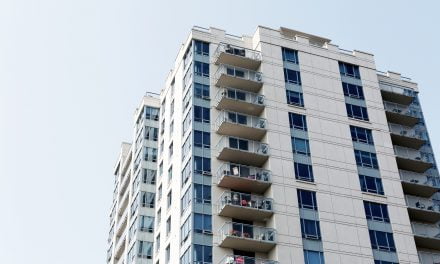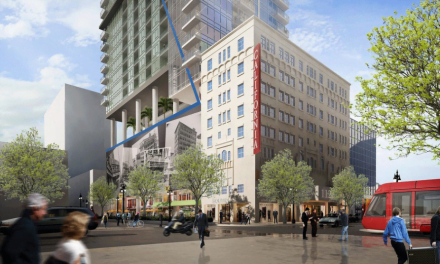The Fed plans to raise interest rates this year: that’s no mystery. But more important for the housing market is when mortgage rates will rise.
The Fed to increase short-term rates
The Federal Reserve (the Fed) has made clear its intention to start raising interest rates by the end of 2015. The short-term interest rate (called the Federal Funds rate) has hovered in the 0%-0.25% range since 2009. By keeping the short-term rate near zero, the Fed indirectly keeps mortgage rates low, encouraging homeownership and borrowing by households and businesses.
The Fed’s consideration for increasing the short-term rate is based on targets for:
- a “maximum” nationwide employment rate; and
- inflation expectations of 2%.
How does this work? At a basic level, when the short-term interest rate is lowered, borrowing, spending and inflation tend to rise. When the Fed raises the short-term rate, borrowing, spending and inflation cools down. However, today’s inflation rate remains below the target 2% inflation objective for a normally functioning economy.
Thus, the Fed has kept the short-term rate as low as it dare go – zero – to encourage a higher rate of inflation, which it has not yet achieved in seven years.
Editor’s note — One reason we have not had sufficient inflation is that the Fed has refused to lower rates below zero and go negative – lending to banks at, say, minus 2%, which may enable banks to make more loans at ever lower rates.
By gunning for a higher inflation rate, the Fed indirectly (but intentionally) stimulates employment growth. That’s because higher inflation and full employment have a symbiotic relationship (with some exceptions). Simply put, when employees are well paid and their jobs are secure, their demand for goods and services increases, resulting in rising price inflation. When employment is low (and unemployment high) demand for goods and services is low, keeping price inflation in check.
Today, the employment rate is continuing to show improvement and consumer price inflation (CPI) is expected to reach its 2% target rate soon (though it’s not there yet). Thus, the Fed is getting ready to raise the short-term rate.
However, the Fed won’t be fighting high inflation this time around. Instead, it will be attempting to build up a margin for the short-term interest rate above the zero lower-bound rate.
The Fed needs to raise rates to restore a necessary device to its toolbox for keeping the economy in check. Then, when the next business recession occurs the Fed will be able to reduce interest rates once again to jumpstart the economy. Otherwise, if rates linger at their current zero lower-bound rate, not only will the economy eventually run amok (i.e. the Millennium Boom following the aborted 2001 recession) and later crash spectacularly (i.e. the 2008 financial crisis and Great Recession), but the Fed won’t be able to lower rates to help bring the nation out of the next recession.
The Fed’s next meeting when they can announce a policy change is on September 16-17, during which Fed Chair Janet Yellen will give a press conference. If Yellen doesn’t announce the rate increase in September, there are two more meetings in 2015: one at the end of October and one in mid-December. However, October is unlikely because there is no press conference scheduled that month. Therefore, if the rate hike happens this year it’s most likely to be announced in September or December.
What happens when the Fed increases the short-term rate?
The short-term rate directly impacts adjustable rate mortgage (ARM) rates. ARM rate movement is tied to one of several index rates, all of which are directly influenced by the Fed’s short-term rate. Therefore, when the Fed raises rates, these index rates rise, and in turn ARM rates rise an equal amount.
The effect on fixed rate mortgages (FRMs) is harder to pin down. That’s because FRMs are only indirectly influenced by the short-term rate. In fact, the 10-year Treasury Note (T-Note) is the most important rate to watch for future FRM rates.
Investors looking for a safe place to park their money purchase 10-year T-Notes. In times of long-term economic uncertainty, investors from around the world pour money into 10-year T-Notes, and this increased demand keeps rates on 10-year T-Notes low. Low long-term interest rates reflect a negative perception of future economic performance, here and abroad.
So, when the Fed raises the short-term rate, more often than not the 10-year T-Note rises around the same time as the Fed’s action. The Fed increases their short-term rate in anticipation of economic improvement (via inflation and employment). In turn, investors in the 10-year T-Note re-direct their investments to other more profitable sources of growth, which become more readily available in the (usual) growth experienced as the U.S. economy heads into expansion.
Thus, typically, the 10-year T-Note rate rises, along with FRM rates – both in anticipation of increased economic activity. The Fed fights anticipated inflation and investors look for opportunities in the expanding economy.
However, 2015 is a very different set of facts, recalling the Depression era.
The global economy is in turmoil in 2015, with Greece casting doubt on the Eurozone, Russia and Brazil’s gross domestic output (GDP) declining and China’s economy slipping ominously. This causes 10-year T-Notes to look very, very attractive to foreign investors.
Therefore, when the Fed acts to increase short-term rates, not only are investors likely to remain invested in 10-year T-Notes for longer than they would have otherwise, but foreign currency holders will be enticed to buy U.S. dollar denominated investments. After all, where else are they going to safely invest their funds until the global economies recover? Thus, the note rate is likely to remain low for several months, or even up to a couple of years after the Fed raises short-term rates.
Now back to California real estate. While the 10-year T-Note remains low, FRMs will likewise stay near their current levels.
How long will FRM rates stay low? As long as it takes for the waves caused by the various global financial uncertainties to iron out. Expect this to take up to a year, maybe longer, after the Fed increases the short-term rate, so likely after mid-2016. Further, a Fed rate move will cause some harm to most foreign economies as it will strengthen the dollar against other currencies, not a good thing.
How will higher interest rates affect home sales?
When FRM rates rise, expect the real estate market to react with decreased:
- buyer purchasing power immediately upon the FRM rate increase;
- home sales volume within six months of the rate increase; and
- home prices within nine to twelve months after home sales volume starts to drop.
Since FRMs are most likely to increase in the year following the short-term rate increase — though later than previously expected — home sales volume is likely to slow by late-2016 and prices will fall in mid- to late-2017.
Meanwhile, ARM use will increase when FRM rates rise, as homebuyers temporarily seek to artificially extend their purchasing power, a risk most can ill afford with the coming decades of rising interest rates.
first tuesday previously forecasted the next housing boom of rising sales volume and pricing to occur at the end of this decade, around 2018-2020. However, with the likely delay in FRM rate movement following the Fed rate hikes, the next boom will be pushed off another year or so, to 2019-2021. By this time, homebuyers will have mentally adjusted to the new normal of rising interest rates.
More importantly, members of the next generation of first-time homebuyers (Generation Y) will have by then landed sufficient employment and built up savings to qualify them for homeownership. At the same time, their Baby Boomer parents will be retiring in earnest, downsizing and in large part relocating to more retirement-friendly areas. Together, these years will be a Great Confluence of home sales, and the housing market will see a boom in sales volume and pricing. In the meantime, have patience.



















In your article you state, “10-year Treasury Note (T-Note) is the most important rate to watch for future FRM rates.” This is not quite correct. While mortgage rates typically (although not always) track with the yield on the 10 year Treasury, they are *directly* controlled by the price of several issues of mortgage backed securities (MBS)–those issued by Fannie Mae, Freddie Mac and Ginnie Mae. There is a direct correlation between the spot price of the MBS and mortgage pricing for any given day.
I agree with your conclusion–that fixed rates will stay essentially where they are once the Fed raises the FF rate–but not with your method. Since MBS are a fixed-income security, they are highly sensitive to fears of inflation. When the Fed proactively raises the FF rate to forestall future inflation, the fixed income market typically reacts favorably. We have seen many times when a gradual Fed hike has resulted in *lower* fixed rates.